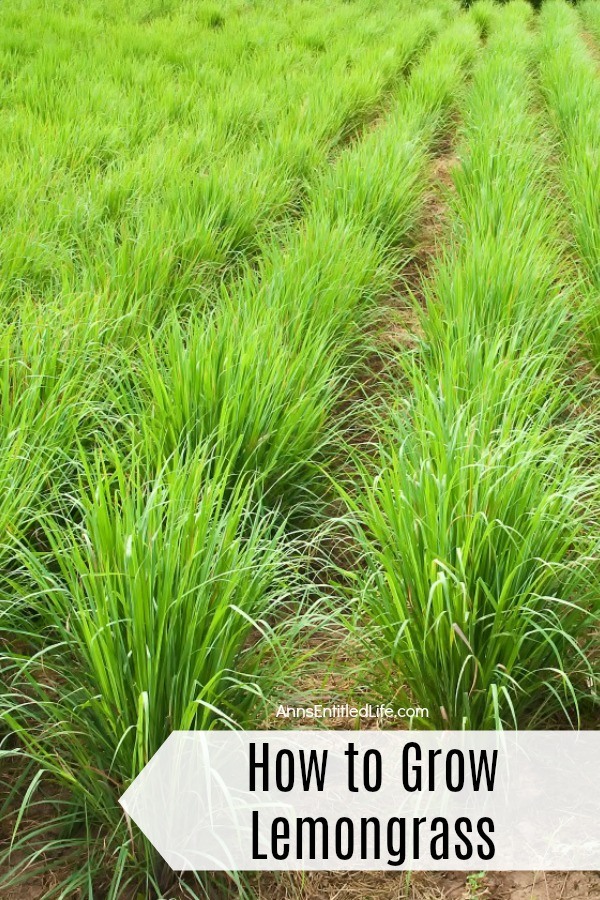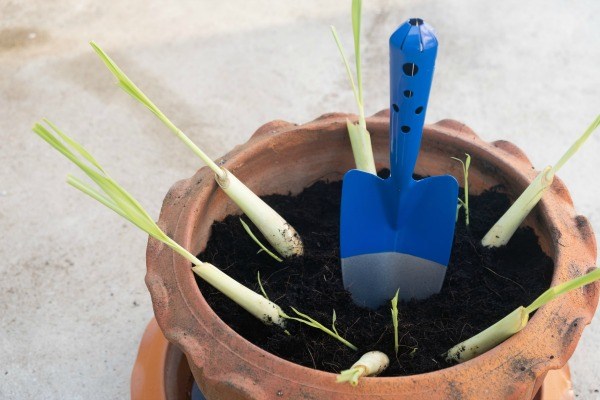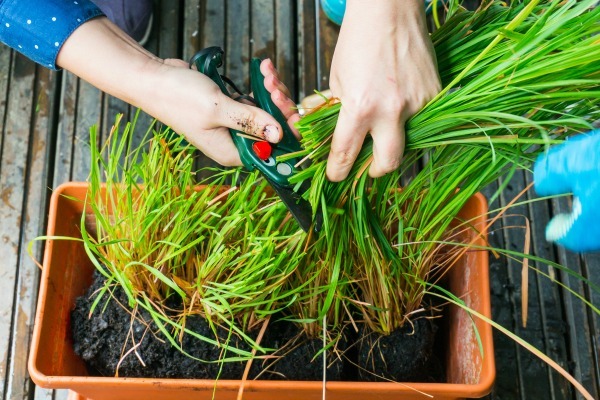Lemongrass makes a great addition to both decorative and functional gardens. Lemongrass is handy with multiple uses from culinary to pest control around your home. This easy to grow ornamental grass can be used as a functional decoration on front steps and entertainment areas to guard your home against pesky mosquitoes. Learn how to grow lemongrass with these easy instructions.
How to Grow Lemongrass
Nearly anyone can grow lemongrass in their home garden with ease to enjoy this citrusy herb fresh at home. Here are some tips on how to grow lemongrass in your home garden!
Where to plant lemongrass
Lemongrass is hardy in zones 8 and higher but can be grown as an annual or in pots to be moved indoors over the winter in cooler climates. Lemongrass loves full sun but can do well if you place it in partial shade if you live in a warmer, more tropical climate. Lemongrass needs very well-draining soil. If your soil is heavy in clay or sand, opt to add plenty of organic matter and compost or fertilizer to help add nutrients and improve drainage of your soil.
How to grow lemongrass
Lemongrass is a large herbal ornamental grass. This herb will grow 3 to 5 feet tall and up to 2 feet wide. When using in your landscaping or placing in your herb garden consider what plants will be growing near it to prevent shading plants that need full sun.
Lemongrass can be grown from seed but it can be easily propagated from cuttings. Taking leftover ends of lemongrass stalks and placing them in a small bit of water will quickly encourage them to grow roots. This allows you to grow lemongrass from even clamshells of the fresh herb available at the local grocery store. When rooting from cuttings be sure to change the water every few days and plant once the cutting begins to grow new leaves.
Plant seeds or rooted cuttings in the garden with 18 to 24 inches between plants to give them plenty of room to spread. This is the perfect plant to grow as a privacy screen near your patio or other outdoor entertainment space. With enough room, these plants will spread to cover a large space in a relatively short period of time.
Wait to plant your lemongrass until the soil has risen to around 70 degrees and after the last frost has passed. If you have a short growing season you can plant indoors 4-6 weeks before the last frost and move out to your garden after the danger of frost has ended and the nights are staying warm.
If you live in a climate that sees cold weather in the winter you can dig up a few stalks to move indoors for easy growing next year and till the remaining leaves and stalks after your last harvest into the soil to nourish it and help feed next years garden or toss your plants into your compost pile.
Tips for growing lemongrass in pots
If you live in a cooler climate or just want to use lemongrass as a decorative addition to your garden or around your home growing lemongrass in pots is a great idea. The key to growing lemongrass in containers is to opt for a (very) large pot. 5-gallon pot with at least a 12-14 inch opening at the top will give you the best results. These look amazing framing doorways or placed in outdoor entertainment areas to help propel mosquitoes while adding a bit of decoration and functionality of this light and citrusy herb.
Fertilize your lemongrass often to encourage it to grow to its full potential. This can easily be done with compost tea, adding a layer of compost, or by using commercial fertilizers.
In the winter trim your lemongrass down removing leafy tops cutting 5 to 6 inches from the base of the stalks. Place potted lemongrass in a south-facing window or under a grow light to help it thrive throughout the winter. Do not expect a lot of growth until your plant is returned to the outdoors when the warm spring days return.
Protect lemongrass from pests
Lemongrass is particularly susceptible to aphids. With such a large leaf area for them to suk and remove sap they are the perfect host for these pests. While checking every leaf on a regular basis is not an easy task the plant makes it easy to see when there is a problem. Look for brown spots on the leaves of your lemongrass as you pass it in the garden. If you catch brown spots chek the leaves closer to see if aphids are the cause. Remove aphids by using neem oil or simple insecticidal soap.
Harvesting fresh lemongrass
In early harvests opt to only cut stalks that have reached 1/4 inch around to allow your plant plenty of time to grow. Later in the season, you can safely opt to harvest the entire plant before the first frost hits, as part of your trimming it back for the winter. When harvesting for the tender bottoms cut as close to the ground as possible. If you are leaving your plant to overwinter either outdoors in a warm tropical climate or potted indoors opt to leave at least a few stalks 5-6 inches long.
● For more Recipes on Ann’s Entitled Life, click here.
● If you enjoyed this post, be sure to sign up for the Ann’s Entitled Life weekly newsletter, and never miss another article!



Marie says
Your post couldn’t be more timely. I planned on growing lemongrass in my deck planters this summer. Unfortunately, I live in a Zone 3 climate so they’ll be an annual but I sure needed your helpful tips to keep them healthy. Pinned